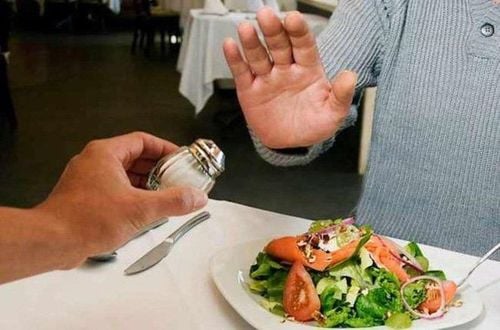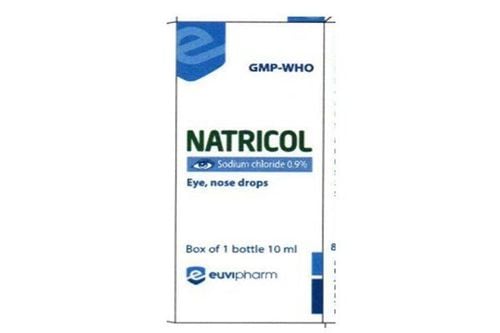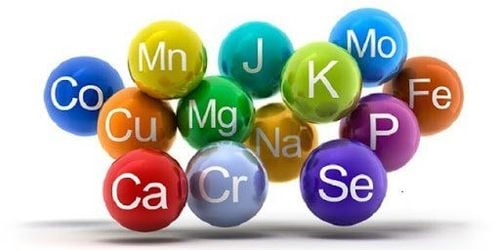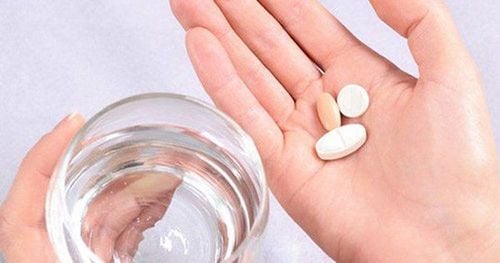This is an automatically translated article.
The article is professionally consulted by Master, Doctor Tran Hong Nhat - Interventional Cardiologist - Cardiovascular Center - Vinmec Central Park International General Hospital. The doctor has more than 10 years of experience in examining and treating interventional cardiovascular diseases.Heart disease is the leading cause of death, dubbed the "silent killer" because of its silent progression but with enormous consequences for health. An improper diet can be an aggravating factor for heart disease.
1. Principles of building menus for heart patients
1.1. Control your food intake How much you eat is just as important as what you eat. Filling your plate with food makes you tend to eat more than usual, leading to more calories than your body really needsTo control this, you should divide your portion small plates and bowls. In which, a larger portion is for foods that are low in calories and rich in nutrients such as fruits and vegetables; Smaller portions are for high-calorie, high-salt foods such as refined, processed or fast foods. This approach can help you control and guide a good heart-healthy diet.
1.2. Eat lots of vegetables and fruits

It is recommended to choose recipes that have vegetables or fruits as the main ingredient, such as sautéed vegetables or fruit salad dressings. However, you also need to keep in mind that not just as long as vegetables are processed in any way, they are good for heart health. You can refer to the following notes to choose the best vegetables and fruits to prepare them:
Fruits and vegetables to choose:
Vegetables must be fresh or frozen; If the vegetables are packaged or processed, they must contain less salt; If it is canned fruit, it must be contained in water or fruit juice, with no added sugar or other additives. Fruits and vegetables should be limited:
Mixed vegetables with cream sauces; Stir-fried or breaded vegetables; Fruit packed in high sugar syrup; Frozen fruit has added sugar. 1.3. Choose whole grains Whole grains are a rich source of fiber and many other nutrients that are beneficial for regulating blood pressure in particular and heart health in general. You can increase the amount of whole grains in your heart-healthy menu by replacing them with refined grains
Grain products to choose:
Whole wheat flour; Whole grain bread, preferably 100% whole grain; High-fiber cereals (5g or more/serving); Whole grains such as brown rice, barley and buckwheat; Whole wheat pasta; Oatmeal.

Refined white flours; White bread; muffins; Frozen waffles; Corn bread (corn); Donuts; Cookies; Fast fermenting bread; Pies; Egg noodles; Popcorn. 1.4. Limit unhealthy fats Limiting the amount of saturated and trans fats in your diet is an important step in lowering blood cholesterol and reducing the risk of coronary heart disease.
You can reduce the amount of saturated fat in your diet by choosing lean meats with less than 10% fat; Use butter, margarine in small amounts in the dish during cooking or processing.
Use low-fat substitutes for fat whenever possible, for example dipping baked potatoes with salsa (a Mexican sauce made from tomatoes) or low-fat yogurt instead of butter; Use fresh sliced fruit or low-sugar processed fruit on bread in place of margarine.
Recommended fats are monounsaturated fats like olive oil or canola oil. Additionally, polyunsaturated fats — found in some fish, avocados, and nuts — are also good choices for people with heart disease. These two types of fat when substituted for saturated fat can help reduce total blood cholesterol, but need to be used in moderation because all fats are high in calories.
1.5. Choose low-fat protein sources Lean meat, poultry, fish, eggs, and low-fat dairy products are the best sources of low-fat protein supplements to choose from. But careful selection is needed to ensure the lowest amount of fat in them, for example choose skim milk instead of whole milk, choose skinless chicken breast instead of skin,...
Some types of fish are very rich. Omega-3 fatty acids can lower triglycerides, an indicator of blood fats. The highest amounts of omega-3 fatty acids are found in cold-water fish, such as salmon, mackerel or herring; in some other sources such as flaxseeds, walnuts, soybeans, canola oil.
Legumes such as peas, lentils are also high in protein, low in fat and cholesterol free, making them a very good substitute for meat. The use of plant protein instead of animal protein will help reduce fat and cholesterol, increase fiber for the body, good for people with heart disease.
1.6. Reduce salt in the diet Eating a lot of salt can contribute to high blood pressure, a risk factor for cardiovascular disease. Therefore, reducing salt is an important part to pay attention to when building a diet for people with heart disease.
The American Heart Association recommends:
Healthy adults should consume no more than 2,300mg of salt per day (equivalent to 1 teaspoon of salt); The ideal salt intake for adults is less than 1,500mg per day. Reducing the amount of salt you add to food when processing is right but not enough, because most of the salt intake in the body comes from canned or processed foods such as soups, baked goods, ... Fix it by Eat fresh foods, cook your own soups and stews to cut down on salt most effectively.
If you must eat canned and processed foods, choose foods that are low in salt. Be wary of foods that appear to be low in salt, as they are seasoned with sea salt instead of regular salt, which is similar in nutritional value.

Refer to the list of low-salt and high-salt products below to choose them appropriately in your meals:
1.7. Plan your daily menu in advance Through the above items, you have learned which foods are good for the heart and which foods should be limited. Now is the time to plan your menus and put them into practice.
Note that when choosing foods for main and side meals, always focus on vegetables, fruits and whole grains. Choose a protein source that is lean meat, eat foods with healthy fats, and limit salty foods. Finally, consider the food portion to see if the quantity is guaranteed.
The process of building a good menu for the heart also needs to pay attention to changing dishes, changing ways of processing to increase appetite, not to cause boredom. This also helps to ensure that the body receives adequate nutrients.
1.8. Allowing Out-of-the-Ordinary Eating from Time to Time A candy bar or a few chips won't ruin the effectiveness of a built-in diet. However, only use them in small amounts and infrequently, to avoid them becoming an excuse to make you give up your current diet.

2. Refer to the menu for people with heart disease
Here are 2 reference menus for heart patients. You can rely on them to estimate and build a menu for the whole week.2.1. Day 1 Breakfast menu:
1 cup cooked oatmeal, sprinkled with an extra tablespoon of chopped walnuts and 1 teaspoon of cinnamon powder. 1 banana. 1 cup skim milk. Lunch:
1 cup low-fat white yogurt with 1 teaspoon flaxseed. 1/2 cup has halves of canned peaches with peach juice. 5 baked cookies. 1 cup broccoli and white (can be boiled, steamed, or eaten raw). 2 tablespoons low-fat cream cheese. 1 cup of carbonated water. Dinner:
4 ounces of salmon (about 0.1132 kg). 1/2 cup chickpeas with 1 tablespoon toasted almonds. 2 cups mixed greens salad. 2 tablespoons low-fat salad dressing. 1 tablespoon sunflower seeds. 1 cup skim milk. 1 small orange. Snack:
1 cup skim milk. 9 cookies. 2.2. Day 2 Breakfast menu:
1 cup plain, low-fat yogurt, from 3/4 cup to the top of the cup topped with a layer of blueberries. 3/4 cup orange juice. Lunch:
1 whole-grain bagel, topped with 1 cup chopped lettuce, 1/2 cup sliced tomatoes, 1/4 cup sliced cucumber, 1 tablespoon shredded cheese, 1 tablespoons low-fat cream sauce. 1 kiwi. 1 cup skim milk. Dinner:
Chicken (3 ounces, 0.0849 kg) sauteed with eggplant (1 cup) and basil. 1 cup brown rice with 1 tablespoon dried apricots. 1 cup steamed broccoli. 4 ounces red wine (about 0.1132 kg) or grape juice. Snack:
2 tablespoons unsalted nut mix. 1 cup fat-free cold yogurt. With the above menu, the nutrition for day 2 is loaded as follows:
If you have any concerns about nutrition when suffering from heart disease, patients can go to Vinmec International General Hospital for examination and advice. The doctors who are leading experts in heart disease here will advise you specifically not only on nutrition but also on the care regimen in heart patients in general to achieve the highest treatment efficiency.
Reference source: healthline.com; mayoclinic.org
Please dial HOTLINE for more information or register for an appointment HERE. Download MyVinmec app to make appointments faster and to manage your bookings easily.














